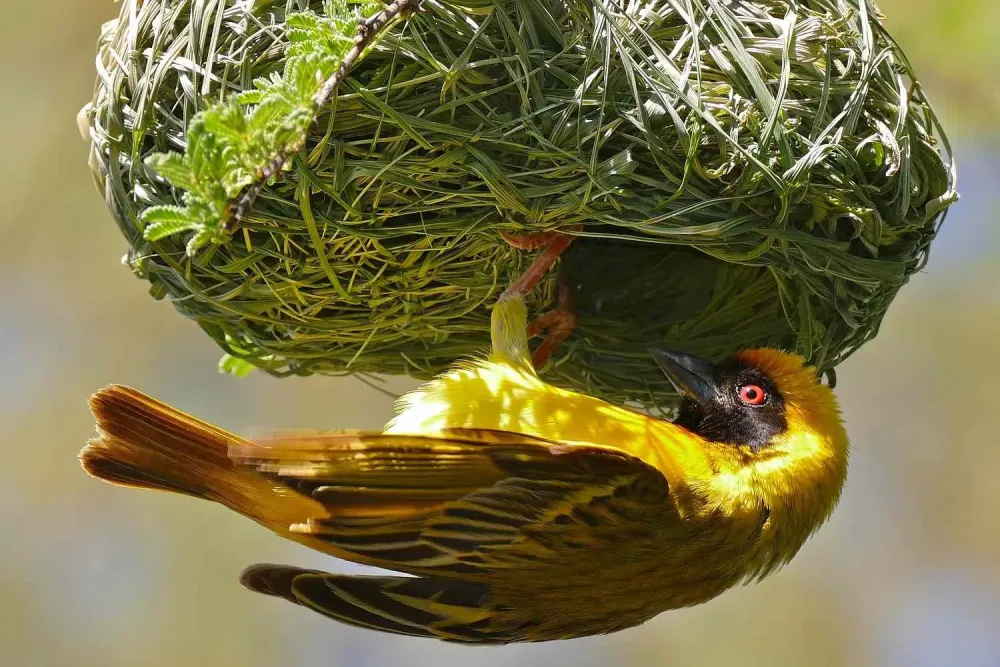Your cart is empty
How Many Bird Nests Are There in the World

Bird nests are fascinating structures, each uniquely crafted by different species to protect their eggs and raise their young. But just how many bird nests are there globally? Estimating this number is tricky, as it depends on bird populations, nesting habits, and environmental factors. In this blog post, we’ll dive into the world of bird nests, exploring species diversity, nesting behaviors, and the challenges of counting nests worldwide. While exact figures are elusive, we’ll piece together what we know to provide a clearer picture.
The number of bird nests starts with understanding how many bird species exist and how they nest. Scientists estimate there are about 10,000 to 11,000 bird species globally, though new discoveries and taxonomic changes keep this number fluid.
How Many Birds Exist
Pinpointing the global bird population is a challenge. Studies suggest there are roughly 50 billion to 430 billion individual birds worldwide, based on data from citizen science projects like eBird and population models. For instance, a 2021 study in Science estimated 50 billion birds by analyzing species abundance. However, these numbers fluctuate due to migration, breeding seasons, and habitat loss.
Nesting vs. Non-Nesting Birds
Not every bird builds a nest. Some, like the Emperor Penguin, incubate eggs on their feet, while others, like cuckoos, lay eggs in other birds’ nests (brood parasitism). Most species, though, construct nests, ranging from simple scrapes in the ground (e.g., killdeer) to elaborate woven structures (e.g., weaverbirds). Approximately 90% of bird species are nest-builders, meaning billions of birds engage in nesting annually.
Factors Affecting Nest Numbers

The number of nests depends on several variables, including breeding seasons, nest reuse, and environmental conditions. Let’s break these down.
Breeding Seasons and Nesting Frequency
Most birds nest once per breeding season, but some, like robins or sparrows, may produce multiple broods, building new nests each time. For example:
- American Robin: 2–3 broods per year, often new nests per brood.
- Bald Eagle: Typically one nest per year, reused annually.
- Weaverbirds: Males may build multiple nests to attract mates, though not all are used.
Tropical birds may nest year-round, while temperate species stick to spring and summer. This variability makes global nest counts complex.
Nest Reuse and Abandonment
Some birds reuse nests, reducing the total number built annually. Eagles, herons, and owls often return to the same nest, adding materials each year. Conversely, abandoned nests—due to predation, weather, or human disturbance—are common. A 2019 study in The Auk noted that up to 30% of songbird nests may fail per season, prompting new construction.
Environmental Impacts
Habitat loss, climate change, and urbanization affect nesting. Deforestation in the Amazon reduces nesting sites for toucans and parrots, while rising temperatures disrupt breeding cycles. Urban birds like pigeons adapt by nesting on buildings, but their nests are often temporary. These factors make it hard to estimate active nests at any given time.
Estimating Global Nest Numbers
While no precise count exists, we can make educated guesses based on bird populations and nesting behaviors. Let’s explore some approaches.
Population-Based Estimates
If we assume 50 billion birds exist and 90% are nest-builders, about 45 billion birds might nest. Since most birds pair up for breeding, and each pair typically builds one nest per season, we could estimate 20–25 billion nests annually. However, this oversimplifies things—multiple broods, colonial nesters, and non-breeding individuals complicate the math.
Colonial Nesting Species
Some birds nest in colonies, creating dense clusters of nests. For example:
- Quelea: These African birds form colonies with millions of nests. A single colony can span hectares, with thousands of nests per tree.
- Penguins: Adélie penguins form rookeries with tens of thousands of nests in Antarctica.
- Flamingos: Their mud-mound nests can number in the thousands per colony.
Colonial nesters skew nest counts, as a single site can host more nests than entire forests of solitary species.
Regional Studies and Scaling
Local studies offer clues. A 2020 survey in North America estimated 7.2 million nests for common species like sparrows and warblers in the U.S. alone. Scaling this globally is tough due to varying habitats, but it suggests billions of nests across continents. Citizen science platforms like NestWatch track nests, reporting thousands annually, though this is a fraction of the total.
Types of Bird Nests and Their Distribution
Nest types and locations influence how we count them. From tree cavities to cliff ledges, nests vary widely.
Common Nest Types
Here’s a look at prevalent nest styles and their builders:
| Nest Type | Description | Example Species |
|---|---|---|
| Cup Nest | Bowl-shaped, made of twigs, grass, or mud | Robin, Finch |
| Cavity Nest | Holes in trees or man-made boxes | Woodpecker, Bluebird |
| Platform Nest | Large, flat structures of sticks | Eagle, Heron |
| Pendant Nest | Hanging, woven pouches | Oriole, Weaverbird |
| Ground Nest | Scrapes or shallow depressions | Killdeer, Ostrich |
Each type reflects adaptations to specific environments, affecting where and how nests are counted.
Geographic Distribution
Nests are unevenly distributed. Tropical regions like the Amazon and Congo Basin host high nest densities due to year-round breeding and species diversity. In contrast, Arctic tundras have fewer nests, limited to short summers. Urban areas see growing nest numbers from adaptable species like sparrows and starlings, with estimates of millions of nests in cities globally.
Challenges in Counting Bird Nests
Accurately tallying bird nests is nearly impossible due to logistical and ecological hurdles. Here’s why.
Hidden and Inaccessible Nests
Many nests are hard to find. Owls nest in tree cavities, petrels burrow underground, and swifts build inside chimneys. High-canopy nests, like those of macaws, are often invisible from the ground. A 2022 study in Ornithology found that 40% of tropical nests go undetected in standard surveys.
Seasonal and Temporary Nests
Nests are often short-lived. Songbird nests may last a month, while seabird colonies disperse after breeding. Timing surveys to catch peak nesting is tough, especially across hemispheres with opposite seasons. Abandoned or destroyed nests further muddy the count.
Lack of Global Data
Most nest data comes from temperate regions like North America and Europe, where birdwatching is popular. Tropical and remote areas, home to most bird species, lack comprehensive studies. Programs like eBird and iNaturalist help, but they rely on volunteers and cover only a sliver of global nesting activity.
So, how many bird nests are there? While we can’t pin down an exact number, estimates suggest 20–25 billion nests may be built annually, based on global bird populations and nesting behaviors. This figure fluctuates with multiple broods, colonial nesters, and environmental changes. From intricate weaverbird baskets to simple shorebird scrapes, nests reflect the diversity and resilience of birds worldwide. As habitats face threats, monitoring nests through citizen science and research remains crucial to understanding and protecting these remarkable structures.
